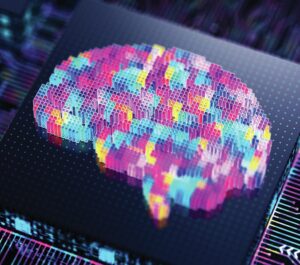AI Nurses: A Solution for Hospital Staffing or a Risk to Quality Care?

The Rise of AI in Healthcare
Artificial Intelligence (AI) is making its mark in the healthcare industry, with various technologies emerging to assist both patients and medical professionals. One example is Ana, an AI program developed by Hippocratic AI. Though not a human, Ana provides support around the clock in multiple languages, helping patients prepare for medical exams and answering their questions.
Automation in Nursing Tasks
AI’s role in healthcare is becoming increasingly evident as hospitals implement advanced computer systems to carry out tasks traditionally performed by nurses and medical assistants. AI programs now monitor patients’ vital signs, identify emergencies, and even create step-by-step care plans. This technology aims to enhance nurses’ efficiency and address issues like burnout and staffing shortages. However, this evolution has raised concerns among nursing unions about the potential implications for patient care quality.
Concerns from Nursing Unions
Unions, like National Nurses United, are wary of AI’s integration into healthcare. Michelle Mahon, a representative from the union, voiced concerns that hospitals are attempting to replace nurses with this technology. They argue that this shift could diminish the quality of care patients receive and undermine the critical skills that nurses possess. The union has protested at over 20 hospitals, advocating for greater involvement in how AI is utilized and protections for nurses who may choose to disregard automated recommendations.
Real-World Challenges
Despite the intentions behind AI, there are significant challenges that come with its integration into care processes. Nurses have reported instances where AI systems misidentify patients’ conditions or produce false alarms. For example, Adam Hart, a nurse at Dignity Health in Nevada, faced a situation where an AI flagged a patient for immediate treatment that could have been harmful. He felt compelled to rely on his clinical knowledge, demonstrating the importance of human oversight in healthcare.
Melissa Beebe, a cancer nurse, echoed similar sentiments. The influx of alerts from AI systems can complicate a nurse’s ability to focus on their patients. False alarms — including alerts even for normal bodily functions — can create confusion and distract from actual medical issues.
Balancing Technology with Human Insight
Nursing experts acknowledge the advantages AI can offer but stress the need for careful implementation. Michelle Collins, a dean of nursing at Loyola University, emphasized that while incorporating AI tools can be beneficial, it would be unwise to let technology overshadow the human element of care. Nurses can pick up on subtle signs that AI may miss, like a patient’s emotional state or the nuances of their physical condition.
The COVID-19 pandemic has added another layer to this discussion. With over 100,000 nurses leaving the profession during this crisis, the U.S. healthcare system is bracing for a growing demand for nursing staff. Estimates suggest there will be more than 190,000 nursing openings annually until 2032, which puts pressure on healthcare administrators to find ways to support their workforce.
Enhancing Communication with AI
One innovative solution being implemented is using AI to improve patient communication and streamline administrative tasks. The University of Arkansas for Medical Sciences, for instance, introduced an AI assistant from Qventus to handle patient outreach. This AI program helps connect with patients to confirm important medical information, freeing nurses to focus on more complex tasks that require human intervention.
Qventus claims that 115 hospitals are now utilizing its technology to enhance efficiency and reduce burnout among staff. The AI communicates transparently, letting patients know whether they are speaking with a human or an AI program.
Future of AI in Healthcare
As AI technology evolves, there are companies like Xoltar exploring new frontiers. They are creating humanlike avatars for video calls with patients, and collaborating with medical facilities like the Mayo Clinic. Their AI assistants are designed to deliver cognitive therapies for patients dealing with chronic issues, using techniques that recognize body language and other non-verbal cues.
While such advancements may help streamline interactions for relatively healthy patients, experts remind us that most healthcare users are not in that category. A critical examination of whether AI tools are suitable for the seriously ill remains necessary, as these individuals often require more nuanced care than technology currently provides.
In Summary
AI’s footprint in healthcare is expanding, offering both opportunities and challenges. As hospitals adopt these technologies, there is a pressing need to find a balance between leveraging AI’s capabilities and maintaining the essential human care provided by nurses. Engaging with the nursing workforce and addressing their concerns will be vital in shaping an effective integration of AI into the healthcare ecosystem.





